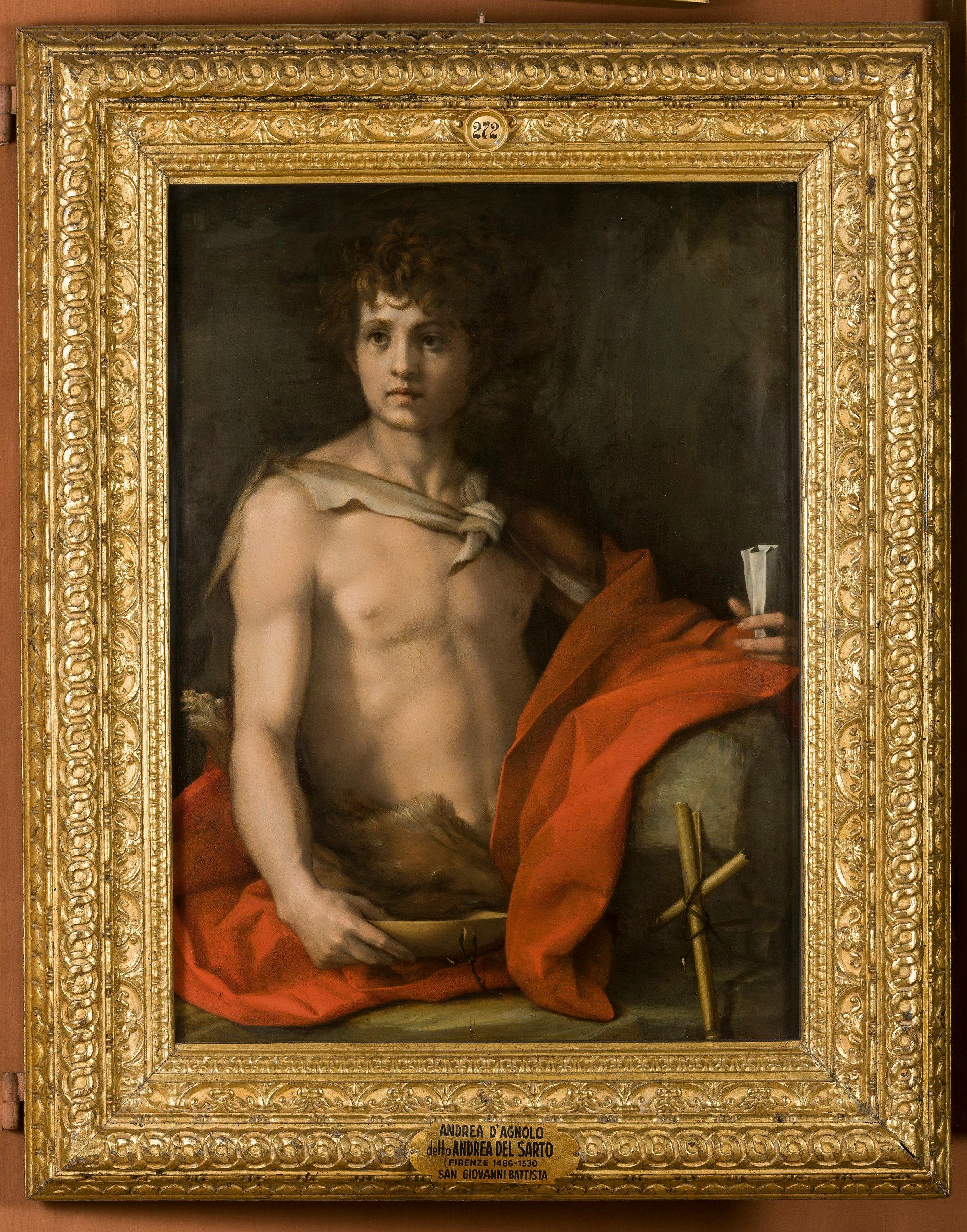St. John the Baptist
Andrea d'Agnolo, known as Andrea del Sarto (Firenze 1486 – 1530)
By choosing to depict the sculpted figure of a young Saint John the Baptist standing out against a dark background, enveloped in an intense light, Andrea del Sarto is referring directly to the opening passage from the Gospel of John, which focuses on the Baptist’s role as a forerunner of Christ and a prophet of his coming.“There came a man who was sent from God; his name was John. He came as a witness to testify concerning that light, so that through him all men might believe. He himself was not the light; he came only as a witness to the light.” (John 1,6-8)
Aware of his mission, the saint depicted by del Sarto in this painting stands proudly by a stone that almost looks like a sacred table. His body is half-hidden by bright red drapery on which he rests a hand holding a traditional scroll featuring the inscription Ecce Agnus Dei (Here is the Lamb of God), which alludes to Christ’s crucifixion.
In Florence, figurative traditions reserved a lot of space to this saint, patron of the city and protector of various guilds (such as those belonging to furriers, tailors and wool carders), and entire decorative series were dedicated to him. Among these is a painting by Andrea del Sarto, whose commission is linked to the rich Florentine banker Giovanni Benintendi. Eager to celebrate the homonymous saint and the sacrament of baptism – which occurred in anticipation of the ministry of Christ – Benintendi commissioned a group of artists to create paintings for a wooden headboard placed ornamentally in his palace’s antechamber. St. John the Baptist was to be the focus of the decorative series, which also included the Adoration of the Magi by Pontormo (exhibited in the Prometheus Room at the Palatine). The artwork was later donated to Cosimo I in 1553 and thus became part of the Medici collections.
Andrea del Sarto focuses on John the Baptist’s attributes in the lower half of the painting, where we find the simple terracotta bowl used to baptise Jesus and the other neophytes in the Jordan River on a rock, as well as a camel hair and a humble cane crucifix. These are the symbols of the years of penance and prayer spent by John in the desert, dwelled upon by the hagiographic sources and the numerous biographies written in the vernacular and dedicated to the saint at the end of the fifteenth century.
The naturalistic rendering of Baptist’s face was standard practice for Andrea, who often studyied live models for his works, which he initiated with a series of preparatory drawings in black or red pencil in order to explore potential positionings and expressions. The young man’s beautiful head, with a proud gaze, thick, curly hair, and dry, bare skin are somewhat reminiscent of Michelangelo’s formidable David.
